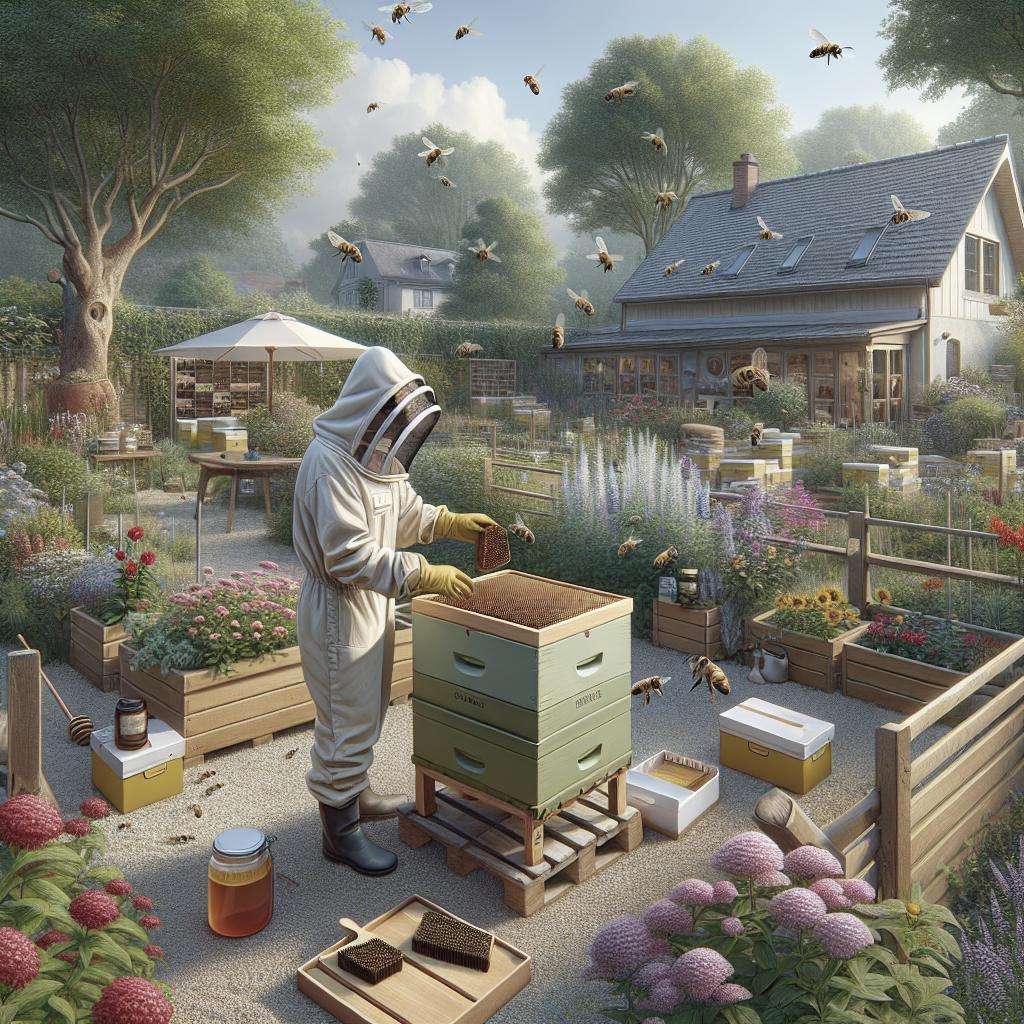How to Set Up an Apiary in Your Backyard
Ever dreamt of producing your own honey from the comfort of your backyard? Setting up an apiary might be the answer. This guide delves into everything you need to know about backyard beekeeping—from understanding your honey bee farming project and starting an apiary, to deciding between different types of bee hives, and choosing the perfect location for them. We’ll also cover how to get bees and the additional equipment required to make your bee farm a buzzing success. Whether you’re a hobbyist or a budding business owner, this comprehensive guide is designed to help you embark on your beekeeping journey.
Our Honey Bee Farming Project
Starting your honey bee farming project is not just about creating a portable source of sweet natural honey; it’s about contributing to the ecological balance. Bees play a crucial role in pollinating plants, which is essential for the production of fruits, vegetables, and nuts. By setting up an apiary, you’re not only looking out for yourself, but you’re also giving back to nature.
Before you dive into deciding on hive frames and protective suits, it’s essential to have a solid plan. Consider the reasons behind your interest in beekeeping. Are you looking to produce honey for personal use or are you exploring it as a commercial endeavor? Understanding your goal will guide your decisions, from the initial choice of bees and hives to the long-term management of your apiary.
How to Start a Bee Farm
To kickstart your bee farming journey, educating yourself is step one. Dive into books, online forums, and local beekeeping groups to gain a sound understanding of how apiaries operate. Courses are also available to help you build foundational knowledge, providing insights into bee behavior, hive management, and honey production.
Once you’re equipped with knowledge, it’s vital to check on local regulations regarding beekeeping. Policies can vary widely depending on where you live—some areas might require permits or restrict the number of hives based on your lot size. Ensure compliance to prevent legal hiccups that can disrupt your farming plans.
Types of Bee Hives
When it comes to types of bee hives, the most common options are Langstroth, Top-Bar, and Warre hives. The Langstroth hive is composed of box-like frames where bees build their honeycomb, making it especially convenient for honey production. Its design allows for easy expansion by adding more frames as needed.
Alternatively, Top-Bar hives offer a horizontal approach, fostering a natural style of comb building. While these might have lower honey yields compared to Langstroth, they simplify the harvesting process. Warre hives are known for being low-maintenance, supporting a more biodynamic style of beekeeping with less interference in the natural processes of bees.
Build or Buy the Hive
Deciding between building and buying your hive depends on your budget, skills, and interest level. Constructing your hive allows for customization and can be a rewarding project if you’re handy and enjoy DIY. Numerous resources and plans are available online to guide you through building a hive.
On the other hand, purchasing a ready-made hive can save time and ensure professional quality. Many suppliers offer assembled or easy-to-assemble hives that come with all the necessary hardware and frames, reducing the complexity involved in starting your apiary.
Location for the Hive
Choosing the right location for your hive is critical to the success of your apiary. Ideally, hives should be placed in sunny areas away from strong winds, with the entrance facing the morning sun to encourage bees to start their activities early.
Additionally, proximity to food and water sources is essential. Bees travel up to three miles in search of these necessities, so placing your apiary near abundant flowering plants and within easy reach of water sources can enhance your hive’s productivity.
Getting the Bees
When it comes to obtaining bees, you have several options: buying packaged bees, acquiring a nucleus colony (nuc), or capturing a wild swarm. Each method has its pros and cons. Packaged bees are readily available, allowing you to start in spring—yet, they require more initial management.
Nucs are mini colonies that include bees, a queen, and brood, providing a more established start. Capturing a swarm, while more challenging, can be rewarding and cost-effective. Engaging with local beekeeping communities can provide access to experienced beekeepers who can help in acquiring your first colony.
Additional Equipment Needed
To maintain a thriving bee farm, several additional pieces of equipment are necessary. A protective suit and veil are crucial for safety when working near the bees. Smokers can help calm the bees, reducing aggressive behavior and making hive management smoother.
You’ll also require a hive tool for prying apart hive components and managing frames, as well as a bee brush to gently move bees without harming them. Lastly, an extractor will be essential during harvesting, especially if you’re aiming for significant honey production.
Future Prospects
| Step | Description |
|---|---|
| Honey Bee Farming Project | Understand the ecological role of bees and set clear objectives for your apiary. |
| Start a Bee Farm | Educate thoroughly, check regulations, and connect with resources for foundational knowledge. |
| Types of Bee Hives | Explore Langstroth, Top-Bar, and Warre hives based on your needs and honey production goals. |
| Build or Buy Hive | Consider building your own for customization or buy pre-made for convenience and reduced effort. |
| Location for the Hive | Select a sunny spot protected from winds, and near water and food sources. |
| Getting the Bees | Choose between packaged bees, nucs, or swarming, with considerations for each method. |
| Additional Equipment | Acquire a protective suit, smoker, hive tool, bee brush, and extractor for maintenance and honey harvesting. |


